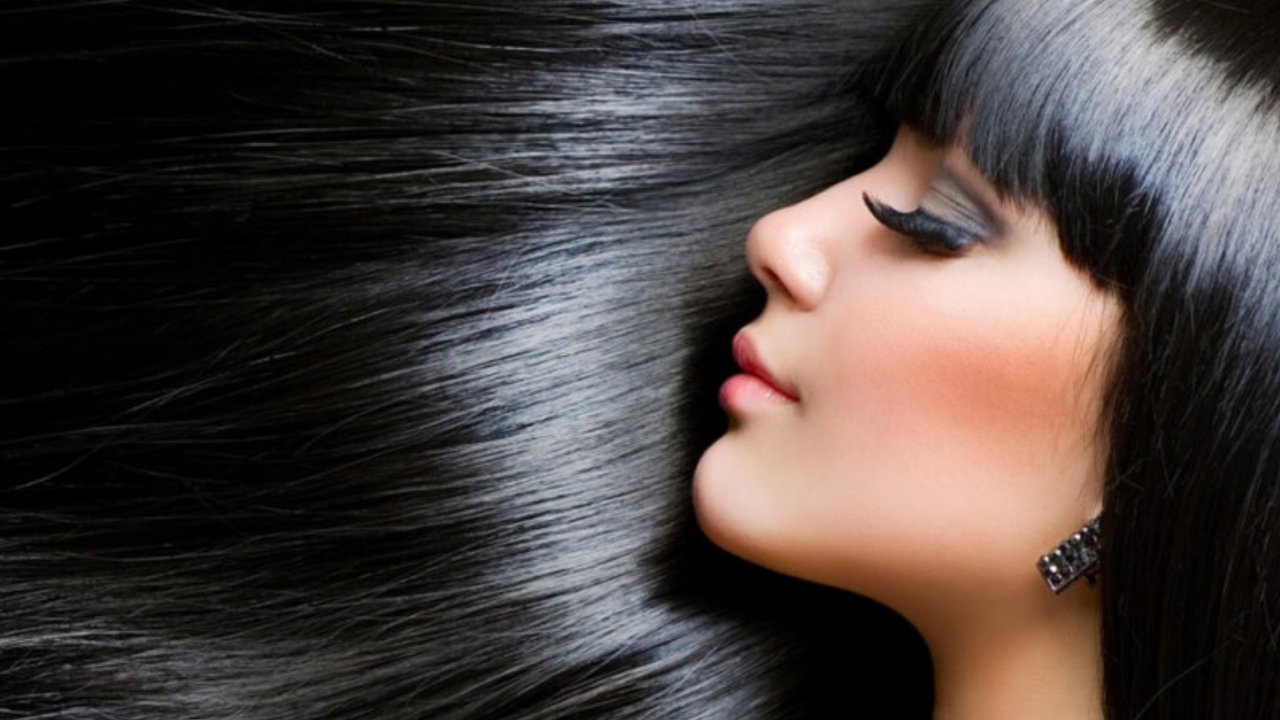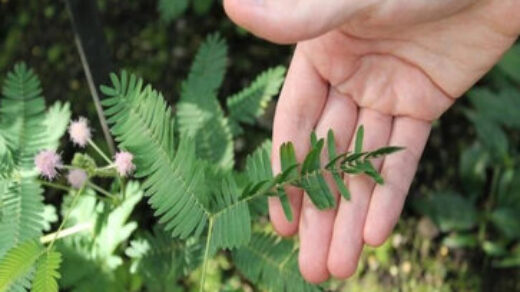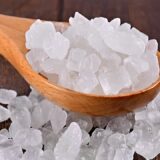For many women, having hair that is not only cute and healthy but also long and strong is a cherished aspiration. It’s a common misconception that achieving rapid hair growth requires costly chemicals and treatments. In reality, there are simple, natural remedies that can promote faster hair growth without breaking the bank. Incorporating these natural ingredients into your hair care routine can nourish your scalp, strengthen your hair, and enhance its growth from the roots. By focusing on what nature provides, you can avoid the high costs and potential side effects of synthetic products.
Incorporating these natural ingredients into your hair care routine can nourish your scalp, strengthen your hair, and enhance its growth from the roots. By focusing on what nature provides, you can avoid the high costs and potential side effects of synthetic products.
Explore these effective, budget-friendly strategies to make your hair healthier and more vibrant. Embrace these natural solutions to achieve the long, strong hair you’ve always dreamed of, and enjoy the benefits of a well-nourished scalp and revitalized hair.
Natural remedies for hair growth
1. Aloe Vera for Hair Care
Aloe vera, a succulent plant with medicinal properties, has been a cherished ingredient in Indian hair care rituals for centuries. Rich in vitamins, minerals, and enzymes, it offers a plethora of benefits for the scalp and hair.
Benefits:
- Deep moisturization: Aloe vera penetrates the hair shaft, hydrating it from within and reducing dryness.
- Dandruff control: Its anti-inflammatory properties soothe an itchy scalp and help combat dandruff.
- Hair growth stimulation: The enzymes in aloe vera are believed to unclog hair follicles, promoting hair growth.
Application:
- Direct application: Extract fresh aloe vera gel from the plant or use a pure aloe vera gel product. Massage gently into the scalp and hair.
- Leave-in treatment: For deeper conditioning, apply aloe vera gel to damp hair and leave it on for 30 minutes before rinsing.
Frequency:
- Using aloe vera twice a week can yield optimal results. However, the frequency may vary based on individual hair types and needs.
Caution: While aloe vera is generally safe, some individuals might experience allergic reactions. It’s advisable to do a patch test before applying it to the scalp.
By incorporating aloe vera into your hair care routine, you can nourish your hair, improve its texture, and promote healthy growth.
2. Coconut Oil for Hair Care
Coconut oil has been a beloved hair care elixir in India for generations.
Its rich fatty acid composition makes it an exceptional choice for nourishing and strengthening hair.
Benefits:
- Deep conditioning: Coconut oil penetrates the hair shaft, providing intense moisture and preventing protein loss.
- Hair strengthening: Regular use can improve hair elasticity and reduce breakage.
- Scalp health: Coconut oil can help soothe an irritated scalp and reduce dandruff.
- Enhanced shine: It imparts a natural luster to the hair, making it appear healthier.
Application:
- Warm oil massage: Gently warm coconut oil (avoid overheating) and massage it into the scalp and hair. Leave it on for at least 30 minutes before shampooing.
- Pre-wash treatment: For deeper conditioning, apply coconut oil to dry hair a few hours before washing.
Frequency:
- Using coconut oil 1-2 times a week is generally recommended. However, the frequency can be adjusted based on hair type and needs.
Tip: For optimal results, opt for extra virgin or virgin coconut oil, as they retain more of the hair-benefiting nutrients.
Regular coconut oil treatments can work wonders for your hair, leaving it soft, silky, and resilient.
3. Fenugreek Seeds for Hair Care
Packed with proteins and nicotinic acid, fenugreek seeds have been a trusted remedy for hair problems for ages.
Benefits:
- Hair growth stimulation: The essential nutrients in fenugreek promote hair growth and thickness.
- Dandruff reduction: It helps soothe an itchy scalp and reduce dandruff flakes.
- Hair volume: Regular use can add body and bounce to the hair.
Application:
- Fenugreek seed paste: Soak fenugreek seeds overnight, grind them into a fine paste in the morning, and apply it to the scalp and hair.
- Fenugreek oil: Use commercially available fenugreek oil for a more convenient application. Massage it into the scalp and hair.
Frequency:
- Using fenugreek once a week can be beneficial.
Caution: Fenugreek has a distinct odor. Some people find it unpleasant. You can mix it with other ingredients like yogurt or coconut oil to mask the smell.
By incorporating fenugreek into your hair care routine, you can harness its power to achieve healthier, stronger, and more lustrous hair.
Onion juice is indeed touted for its potential benefits in promoting hair growth due to its sulfur content, which can improve blood circulation to the scalp. Here’s a quick guide on how to use it:
Benefits:
- Sulfur Content: Enhances collagen production, which is vital for hair growth.
- Antioxidant Properties: May help reduce oxidative stress and inflammation on the scalp.
- Antimicrobial Effects: Can help reduce dandruff and scalp infections.
Application:
- Extract Juice: You can use a juicer or blender to extract the juice from fresh onions. Strain it through a fine mesh or cheesecloth to remove the pulp.
- Apply: Use a cotton ball or your fingers to apply the juice directly to your scalp.
- Massage: Gently massage the juice into your scalp to ensure even distribution and stimulate blood flow.
- Wait: Leave it on for about 30 minutes. If you find the smell too strong, you can mix it with a few drops of essential oil (like lavender or rosemary) to make it more pleasant.
- Rinse: Wash your hair with a mild shampoo to remove the onion juice and any lingering odor.
Frequency:
- Use it 1-2 times a week to avoid potential irritation or excessive dryness.
Remember, some people might experience irritation or an allergic reaction, so it’s a good idea to do a patch test before full application. And if you have any concerns or ongoing scalp issues, consulting a dermatologist is always a good approach.
4. Onion Juice for Hair Growth
Benefits:
- Sulfur Content: Sulfur is known to improve collagen production and strengthen the hair follicles, which can potentially boost hair growth.
- Antioxidant Properties: It may help to combat free radicals, which can damage hair and slow down growth.
- Antimicrobial Properties: Onion juice has properties that might help reduce scalp infections that can contribute to hair loss.
Application:
- Extract Juice: Grate an onion and extract its juice using a strainer or cheesecloth.
- Apply to Scalp: Gently massage the juice into your scalp. Be careful to avoid contact with your eyes as it can be irritating.
- Leave On: Allow the juice to sit on your scalp for about 30 minutes.
- Rinse: Wash your hair with a mild shampoo to remove the smell of onions. You might need to shampoo more than once to get rid of the odor.
Frequency:
- 1-2 Times a Week: Overuse can lead to irritation or dryness, so it’s best to start with once a week and adjust based on how your scalp responds.
Additional Tips:
- Patch Test: Before applying onion juice to your scalp, do a patch test on a small area of skin to ensure you don’t have an allergic reaction.
- Hydration: Ensure your scalp remains well-moisturized, as onion juice can be drying.
- Mixing: Some people mix onion juice with other ingredients like honey or coconut oil to reduce the pungency and add additional benefits.
If you find the smell or application process challenging, you might consider other treatments or consult a dermatologist for personalized advice.
5. Hibiscus Flowers and Leaves for Hair Care
Benefits:
- Rich in Vitamins: Hibiscus is packed with vitamins like A, C, and B vitamins, which are beneficial for hair health. Vitamin C, in particular, can help with collagen production, which is vital for hair growth.
- Promotes Hair Growth: The nutrients in hibiscus can help stimulate hair follicles and promote hair growth.
- Prevents Premature Graying: Hibiscus has properties that can help maintain the natural color of your hair and delay graying.
Application Methods:
Hibiscus Flower Paste:
- Preparation: Crush fresh hibiscus flowers (and optionally, the leaves) into a fine paste. You can use a blender or mortar and pestle for this.
- Application: Apply the paste directly to your scalp and hair. Ensure it’s evenly distributed.
- Leave On: Let it sit for about 30-60 minutes.
- Rinse: Rinse thoroughly with lukewarm water and a mild shampoo. You might need to shampoo more than once to remove all residues.
Hibiscus Oil:
- Preparation: Infuse dried hibiscus flowers in a carrier oil (like coconut oil, almond oil, or olive oil). Heat the oil gently with the flowers and let it sit for a few days to allow the hibiscus to infuse into the oil.
- Application: Massage the infused oil into your scalp and hair.
- Leave On: For deeper conditioning, leave it on overnight or for a few hours.
- Rinse: Wash out with a mild shampoo.
Frequency:
- 1-2 Times a Week: Depending on your hair type and how your scalp responds, you can adjust the frequency. Start with once a week and increase if needed.
Additional Tips:
- Patch Test: Perform a patch test before full application to check for any allergic reactions.
- Hydration: After using hibiscus, make sure to keep your hair and scalp well-hydrated to maintain moisture balance.
- Consistency: Regular use can yield better results over time.
If you find hibiscus products beneficial, incorporating them into your routine alongside other good hair care practices can help enhance your overall hair health.
6. Neem Leaves for Hair Care
Benefits:
- Antibacterial Properties: Neem has powerful antibacterial and antifungal properties that can help combat scalp infections and dandruff.
- Reduces Dandruff: Its antimicrobial properties can help reduce flakiness and itching associated with dandruff.
- Soothes Scalp: Neem can also soothe an irritated scalp and promote overall scalp health.
Application Methods:
Neem Leaf Paste:
Preparation:
- Take fresh neem leaves and wash them thoroughly.
- Grind the leaves into a fine paste using a little water. You can use a blender or mortar and pestle.
Application:
- Apply the paste directly to your scalp and hair, focusing on areas with dandruff or irritation.
Leave On:
- Let it sit for about 30-45 minutes.
Rinse:
- Rinse thoroughly with lukewarm water. You may need to shampoo afterward to remove any residual paste.
Neem Water Rinse:
Preparation:
- Boil a handful of neem leaves in water for about 10-15 minutes. Let the water cool to room temperature.
Application:
- After shampooing, use the neem-infused water as a final rinse. Pour it over your scalp and hair.
Leave On:
- Allow it to air dry naturally. You don’t need to rinse it out.
Frequency:
- Weekly: Use neem leaves once a week to help manage scalp health and reduce dandruff. Adjust frequency based on how your scalp responds.
Additional Tips:
- Patch Test: Conduct a patch test to ensure you don’t have any allergic reactions or sensitivities to neem.
- Consistency: Regular use of neem can improve scalp health over time, so consistency is key.
- Hydration: Even though neem is beneficial, make sure your scalp remains moisturized to avoid dryness.
Incorporating neem into your hair care routine can be particularly helpful if you’re dealing with scalp issues like dandruff or infections.
7. Yogurt and Honey for Hair Care
Benefits:
- Moisturizes and Nourishes: Yogurt is rich in proteins, vitamins, and lactic acid, which can help moisturize and exfoliate the scalp. Honey is a natural humectant, meaning it attracts and retains moisture.
- Provides Essential Nutrients: Both ingredients provide essential nutrients that can promote healthy hair and a well-hydrated scalp.
- Soothes and Conditions: This combination can soothe an irritated scalp and condition the hair, making it softer and more manageable.
Application Methods:
Yogurt and Honey Mask:
Preparation:
- Mix 1/2 cup of plain yogurt with 2 tablespoons of honey. You can adjust the quantities based on the length of your hair.
Application:
- Apply the mixture to your scalp and hair, ensuring even coverage from roots to ends.
Leave On:
- Let the mask sit for about 20-30 minutes. This allows the ingredients to penetrate and condition your scalp and hair.
Rinse:
- Rinse thoroughly with lukewarm water. Follow up with a mild shampoo if needed to remove any residue.
Leave-In Treatment:
Preparation:
- You can create a lighter mixture for a leave-in treatment by mixing 2 tablespoons of yogurt with 1 tablespoon of honey and adding a little water to thin it out.
Application:
- After washing and towel-drying your hair, apply a small amount of the mixture to the ends of your hair. Avoid the scalp if you prefer not to leave it on the scalp.
Leave On:
- Leave it in your hair without rinsing. This can provide ongoing moisture and nourishment throughout the day.
Frequency:
- Weekly: Using this mask or leave-in treatment once a week can help maintain moisture and nourishment for your scalp and hair.
Additional Tips:
- Use Plain Yogurt: Ensure you use plain yogurt without added sugars or flavors, as these could irritate the scalp or damage hair.
- Adjust Quantities: Adjust the amount of yogurt and honey based on your hair’s length and thickness.
- Patch Test: If you have sensitive skin or allergies, perform a patch test before full application to check for any adverse reactions.
Integrating a yogurt and honey treatment into your routine can help keep your hair moisturized, shiny, and well-nourished.
8. Castor Oil for Hair Care
Benefits:
- Ricinoleic Acid: Castor oil is rich in ricinoleic acid, which is believed to improve blood circulation to the scalp, potentially enhancing hair growth.
- Moisturizes and Conditions: It helps to moisturize and condition both the scalp and hair, making it softer and shinier.
- Antimicrobial Properties: Castor oil has antimicrobial properties that can help maintain a healthy scalp environment.
Application Methods:
Scalp Massage:
Preparation:
- Warm a small amount of castor oil (about 1-2 tablespoons) slightly. Warming it makes it easier to apply and can enhance its absorption.
Application:
- Using your fingertips, gently massage the oil into your scalp in circular motions. This helps stimulate blood flow and ensures even distribution.
Leave On:
- Let the oil sit on your scalp for at least 30 minutes. For deeper conditioning, you can leave it on overnight.
Rinse:
- Wash your hair with a mild shampoo to remove the oil. You may need to shampoo twice to get rid of all the residue.
Combined with Other Oils:
Preparation:
- Mix castor oil with other carrier oils like coconut oil, almond oil, or olive oil. This can help dilute the thickness of castor oil and add additional benefits. A common ratio is 1 part castor oil to 2 parts of another carrier oil.
Application:
- Apply the mixture to your scalp and hair. Massage it in as you would with pure castor oil.
Leave On:
- Let it sit for 30-60 minutes, or overnight for a more intensive treatment.
Rinse:
- Shampoo thoroughly to remove the oil mixture.
Frequency:
- Weekly: Using castor oil once a week is generally effective. Adjust based on how your scalp and hair respond.
Additional Tips:
- Patch Test: Before using castor oil extensively, do a patch test to ensure you don’t have any allergic reactions.
- Warm the Oil: Warm oil is easier to spread and can be more effective for stimulating the scalp.
- Avoid Overuse: Using too much oil or using it too frequently can lead to greasy hair or scalp buildup, so moderation is key.
Incorporating castor oil into your hair care routine can help support hair health and potentially enhance growth. Just remember to balance it with other hair care practices and products.
9. Green Tea for Hair Care
Benefits:
- Antioxidants: Green tea is rich in antioxidants, particularly catechins, which help reduce hair loss by neutralizing free radicals that can damage hair follicles.
- Stimulates Growth: The antioxidants and nutrients in green tea can stimulate hair growth by improving blood circulation to the scalp and strengthening hair roots.
- DHT Reduction: Green tea may help inhibit the production of dihydrotestosterone (DHT), a hormone linked to hair loss, especially in androgenetic alopecia.
Application Methods:
Green Tea Rinse:
Preparation:
- Brew a strong cup of green tea. Use 1-2 tea bags or 1-2 teaspoons of loose leaf green tea in about 1 cup of hot water. Let it steep for 10-15 minutes.
Application:
- Allow the tea to cool to a comfortable temperature.
- After shampooing and rinsing your hair, pour the green tea over your scalp and hair.
Leave On:
- Let the tea sit on your hair and scalp for a few minutes to allow the nutrients to absorb.
Rinse:
- You can rinse it out with cool water, or leave it in for added benefits.
Green Tea and Oil Treatment:
Preparation:
- Brew and cool a cup of green tea. Mix it with a few tablespoons of a carrier oil like coconut oil or olive oil.
Application:
- Apply the mixture to your scalp and hair, massaging gently.
Leave On:
- Let it sit for 30-60 minutes.
Rinse:
- Wash your hair with a mild shampoo to remove the oil and any tea residue.
Frequency:
- 1-2 Times a Week: Using green tea as a rinse or in a treatment once or twice a week can be beneficial for maintaining healthy hair.
Additional Tips:
- Cool Down: Always allow the green tea to cool before applying it to avoid burning your scalp.
- Patch Test: Conduct a patch test to ensure you do not have any adverse reactions to green tea.
- Consistency: Regular use of green tea in your hair care routine can help maintain its benefits over time.
Incorporating green tea into your hair care routine can be a natural and effective way to support hair health and growth.
10. Rosemary Oil for Hair Care
Benefits:
- Stimulates Hair Follicles: Rosemary oil can help stimulate hair follicles, potentially enhancing hair growth and reducing hair thinning.
- Improves Circulation: It improves blood circulation to the scalp, which can help nourish hair follicles and promote a healthier scalp environment.
- Reduces DHT: Some studies suggest that rosemary oil may help inhibit the production of dihydrotestosterone (DHT), a hormone associated with hair loss.
Application Methods:
Rosemary Oil and Carrier Oil Blend:
Preparation:
- Mix a few drops of rosemary oil (typically 5-10 drops) with 1-2 tablespoons of a carrier oil like coconut oil, jojoba oil, or olive oil. The carrier oil helps dilute the rosemary oil and makes it easier to apply.
Application:
- Part your hair and apply the oil blend directly to your scalp. Use your fingertips to gently massage the oil into your scalp in circular motions.
Leave On:
- Let the oil sit on your scalp for at least 30 minutes. For deeper conditioning, you can leave it on overnight (with a towel or shower cap to protect your pillow).
Rinse:
- Wash your hair with a mild shampoo to remove the oil. You may need to shampoo twice to ensure all residue is washed out.
Rosemary Oil Scalp Massage:
Preparation:
- Combine 3-5 drops of rosemary oil with a teaspoon of a carrier oil (such as almond oil or argan oil).
Application:
- Gently massage the mixture into your scalp, focusing on areas where you want to encourage hair growth.
Leave On:
- Allow it to sit for at least 30 minutes or overnight if preferred.
Rinse:
- Shampoo and rinse your hair thoroughly.
Frequency:
- 1-2 Times a Week: Using rosemary oil once or twice a week is generally effective. Adjust based on how your scalp responds.
Additional Tips:
- Patch Test: Conduct a patch test before full application to ensure you do not have any allergic reactions or skin sensitivities.
- Avoid Contact with Eyes: Be cautious not to get rosemary oil in your eyes, as it can cause irritation.
- Consistency: Regular use can help achieve better results over time, so try to incorporate rosemary oil into your routine consistently.
Incorporating rosemary oil into your hair care routine can support healthier hair growth and improve scalp health, complementing other hair care practices you follow.
Additional Tips for Optimal Hair Growth and Thickness
In addition to the natural remedies discussed, incorporating the following practices into your routine can significantly enhance hair growth and thickness:
Brush Your Hair Regularly
- Frequency: Twice a day.
- Benefits: Stimulates blood circulation to the scalp, which can promote hair growth and improve overall scalp health.
Include Protein-Rich Foods in Your Diet
- Examples: Fish, eggs, lean meats.
- Benefits: Protein is essential for hair structure and strength. Adequate protein intake supports the repair and growth of hair follicles.
Avoid Hair Products with Silicones
- Reason: Silicones create a temporary shine but can build up on the hair and scalp, leading to clogged follicles and hindered hair growth.
- Recommendation: Opt for silicone-free products to maintain healthy hair and scalp.
Avoid Brushing Wet Hair
- Reason: Wet hair is more fragile and prone to breakage.
- Tip: Use a wide-tooth comb to gently detangle hair when it’s damp, or let it air dry before brushing.
Consume Biotin-Rich Foods
- Examples: Eggs, soy products, whole grains.
- Benefits: Biotin supports the health of hair and nails. You can also consider biotin supplements if necessary.
By combining these tips with natural remedies, you can create a comprehensive approach to improving hair growth and thickness. Remember, consistency is key, and adopting a holistic approach will yield the best results for healthy, thriving hair.
Try these ancient Indian remedies and witness the magic unfold.
With consistent use, you’ll be amazed at the results. Remember, patience is key. Embrace the journey to healthier, longer, and thicker hair.
 Incorporating these natural ingredients into your hair care routine can nourish your scalp, strengthen your hair, and enhance its growth from the roots. By focusing on what nature provides, you can avoid the high costs and potential side effects of synthetic products.
Incorporating these natural ingredients into your hair care routine can nourish your scalp, strengthen your hair, and enhance its growth from the roots. By focusing on what nature provides, you can avoid the high costs and potential side effects of synthetic products.
























